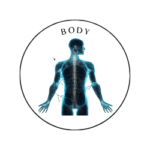 Mind
Mind
- Digital and Modern Well-being
- Mental Health and Emotional Well-being
- Mind-Body Connection and Holistic Health
- Parenting and Family
- Personal Growth and Development
- Relationships and Social Well-being
- Stress and Relaxation
- Therapeutic and Creative Practices
- Trauma and Recovery
- Work, Productivity, and Discipline
 Body
Body
 Fitness
Fitness
 Food
Food
 Beauty
Beauty
Introduction to Mind-Body Fitness

Introduction to Mind-Body Fitness: Finding Balance
Mind-body fitness is a holistic approach to wellness that emphasizes the connection between mental, emotional, and physical health. Rather than focusing solely on physical strength or cardiovascular endurance, mind-body fitness practices aim to improve overall well-being, reduce stress, and cultivate inner peace and mindfulness. This approach has gained popularity as people seek not only physical health but also mental clarity, emotional balance, and a greater sense of purpose.
This introduction will cover the principles of mind-body fitness, its benefits, and popular practices to help you find balance in your fitness routine and life.
What is Mind-Body Fitness?
Mind-body fitness is a form of exercise that integrates mental focus, breath control, and movement to achieve a harmonious balance between body and mind. It prioritizes awareness and mindfulness, helping practitioners to become more present, reduce stress, and build a deep connection with their bodies.
The foundation of mind-body fitness lies in combining physical movement with mental focus and controlled breathing. These practices emphasize quality over quantity, where each movement is purposeful and controlled, often aiming to create harmony in body alignment and mental clarity.
Principles of Mind-Body Fitness
- Mindfulness and Presence: Being present in each moment and fully engaged in the experience, whether during a yoga pose, a breathing exercise, or even a simple walk.
- Breath Awareness: Breath is central to mind-body fitness. Conscious breathing helps regulate the nervous system, reduce stress, and enhance focus, making movement more controlled and effective.
- Controlled Movement: Mind-body exercises emphasize slow, controlled movements that help cultivate balance, flexibility, and strength, all while being mindful of alignment and posture.
- Mental Focus: These practices often include mental exercises that help reduce mental clutter, increase concentration, and encourage a sense of inner peace.
- Body Awareness: Mind-body fitness fosters an awareness of physical sensations, alignment, and tension in the body, encouraging practitioners to listen and respond to their bodies’ needs.
Benefits of Mind-Body Fitness
Incorporating mind-body fitness into your routine can improve both physical and mental well-being. Here are some of the key benefits:
- Reduces Stress and Anxiety: Mind-body practices activate the parasympathetic nervous system, promoting relaxation, reducing stress, and decreasing symptoms of anxiety.
- Improves Flexibility and Balance: Many mind-body exercises, such as yoga and tai chi, increase flexibility, stability, and balance, enhancing overall movement and posture.
- Enhances Mental Clarity: Practices that focus on breath and mindfulness can improve concentration, memory, and mental clarity, allowing you to be more present in your daily life.
- Boosts Emotional Health: Mind-body fitness can improve mood, foster self-acceptance, and reduce feelings of depression by encouraging positive thinking and self-reflection.
- Strengthens the Body: Many mind-body practices build functional strength, particularly in the core, by using bodyweight exercises that promote stability and alignment.
- Promotes Better Sleep: Mind-body exercises reduce stress and calm the mind, which can improve sleep quality and reduce insomnia.
- Encourages Mindful Eating and Healthy Habits: By fostering awareness, mind-body fitness can encourage more mindful behaviors in other areas, such as eating habits, reducing cravings, and promoting healthier choices.
Popular Mind-Body Fitness Practices
Several types of mind-body exercises emphasize mindfulness, breath control, and intentional movement. Here are some of the most popular practices:
1. Yoga
Yoga is one of the most well-known mind-body practices, combining physical postures (asanas), breath control (pranayama), and meditation. With various styles, from slow and restorative to dynamic and vigorous, yoga can suit different fitness levels and preferences.
- Benefits: Improves flexibility, balance, strength, and mental clarity.
- Styles: Hatha (gentle), Vinyasa (flow-based), Ashtanga (structured and intense), and Yin (long-held, deep stretches).
2. Pilates
Pilates is a low-impact exercise method focused on core strength, body alignment, and controlled movement. Developed by Joseph Pilates, it emphasizes precision, control, and breath, helping improve posture, balance, and core stability.
- Benefits: Strengthens core muscles, improves posture and flexibility, and enhances body awareness.
- Focus: Often performed on a mat or with special equipment like reformers to challenge core stability and alignment.
3. Tai Chi
Tai chi is an ancient Chinese martial art characterized by slow, flowing movements. Often referred to as “meditation in motion,” tai chi promotes relaxation, balance, and strength, making it suitable for all ages and fitness levels.
- Benefits: Increases balance, flexibility, coordination, and relaxation.
- Forms: Various forms focus on different aspects, from slow, meditative movements to those with more martial applications.
4. Qigong
Qigong (pronounced “chee-gong”) is another ancient Chinese practice that combines movement, breath, and meditation. It is designed to cultivate and balance energy (qi) within the body, enhancing physical and mental health.
- Benefits: Reduces stress, improves circulation, boosts energy levels, and promotes inner peace.
- Styles: Some forms are more focused on gentle movement and breathing, while others have martial applications.
5. Mindful Walking
Mindful walking involves moving slowly and paying attention to the sensations in your body, the rhythm of your breath, and the environment around you. It is a simple but powerful way to bring mindfulness into daily life, and it can be done indoors or outdoors.
- Benefits: Reduces stress, increases awareness, and helps connect you with nature.
- Practice: Walk slowly, noticing each step, your breath, and the sounds or sights around you.
6. Meditation and Breathwork
While not exercises per se, meditation and breathwork are foundational components of mind-body fitness. These practices focus on mental clarity, breath awareness, and relaxation, forming the basis for a deeper connection between mind and body.
- Benefits: Reduces stress, improves mental focus, and enhances self-awareness.
- Techniques: Techniques range from simple deep breathing and mindfulness meditation to more structured breath exercises like box breathing or alternate nostril breathing.
Getting Started with Mind-Body Fitness
To begin a mind-body fitness routine, you don’t need much equipment—just a willingness to try new movements and be open to mindfulness. Here are some tips to get started:
- Choose a Practice That Appeals to You: Explore different mind-body practices to find one that resonates. Try a yoga or Pilates class, or experiment with tai chi or mindful walking.
- Start with Simple Movements: If you’re new, start with basic exercises to build a foundation. Yoga’s beginner poses, Pilates mat exercises, or basic tai chi forms can help you ease into mind-body fitness.
- Focus on Your Breath: Pay attention to your breathing, using slow, controlled breaths to connect with each movement.
- Be Patient and Consistent: Mind-body fitness takes time to cultivate. Begin with short sessions (10-20 minutes) and gradually increase the duration as you become more comfortable.
- Practice Mindfulness: Whether you’re in a class or practicing at home, try to stay present in each moment, noticing the sensations, thoughts, and feelings that arise without judgment.
- Listen to Your Body: Mind-body fitness is about tuning into your body’s needs. Don’t force movements; instead, listen to what feels right and progress at your own pace.
Integrating Mind-Body Fitness into Your Routine
Mind-body fitness can complement other forms of exercise or serve as your primary workout, depending on your goals. Here are some ways to integrate it into your weekly routine:
- As a Warm-Up or Cool-Down: Begin or end your workout with a short yoga or breathwork session to increase focus and relaxation.
- Dedicated Mind-Body Days: Set aside specific days each week for yoga, Pilates, or tai chi to balance high-intensity workouts.
- Daily Mindfulness Practice: Incorporate short, daily mindfulness exercises, such as mindful walking or breathwork, to maintain inner peace and mental clarity.
- Listen to Your Body: If you’re feeling tired or stressed, a restorative yoga session or qigong practice can be a great alternative to high-intensity workouts.
Conclusion: Finding Balance Through Mind-Body Fitness
Mind-body fitness offers a holistic approach to health, helping you find balance between physical fitness and mental well-being. By cultivating mindfulness, body awareness, and breath control, you can improve flexibility, reduce stress, boost mental clarity, and enhance emotional resilience. Whether you’re drawn to the flowing movements of tai chi or the strength-building benefits of Pilates, mind-body fitness encourages a deeper connection with yourself, promoting a balanced, healthier lifestyle.
Embrace mind-body fitness as a way to nourish both your body and mind, helping you find balance, peace, and inner strength in today’s fast-paced world.
